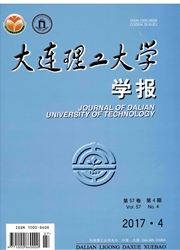

 中文摘要:
中文摘要:
针对着装人体的热、湿舒适性问题,联合改进的25节点人体热调节模型和服装热湿耦合模型,模拟了人、服装、环境系统的瞬态热、湿传递过程.人体模型中考虑了汗水积聚的影响;服装模型中考虑了水蒸汽扩散、液汗毛细传递和蒸发/凝结、纤维湿吸附/解析;针对不同厚度和孔隙率的服装比较了人体的热响应及服装温、湿度变化.数值分析表明,在高温高湿环境下穿厚度大、孔隙率小的服装较穿厚度小、孔隙率大的服装,皮肤温度、皮肤表面出汗率高,干热损失少.模拟结果可以为服装热、湿舒适性定量设计提供指导。
 英文摘要:
英文摘要:
The influence of clothing thickness and porosity on thermal responses of human body is investigated by using an integrated model of a clothed thermoregulatory human body. A modified 25-node model considering the sweat accumulation on the skin surface is applied to simulate the human physiological regulatory responses. The heat and moisture-coupled transfer mechanisms, including the water vapor diffusion, the moisture evaporation/condensation, the moisture sorption/desorption by fibers, the liquid sweat transfer under capillary pressure, and the latent heat absorption/release due to phase change, are considered in the clothing model. The human body's thermal responses and clothing temperature and moisture variations are compared for different clothing with different thickness and porosity during transient periods. The numerical analyses show that for the person dressed in wool clothing with great thickness and low porosity, the skin temperature and sweat generation rate are higher, and the dry heat loss is lower than that with small thickness and high porosity in hot and humid environment. The simulation results can provide the theoretical guidance on the functional design of clothing.
 同期刊论文项目
同期刊论文项目
 同项目期刊论文
同项目期刊论文
 期刊信息
期刊信息
